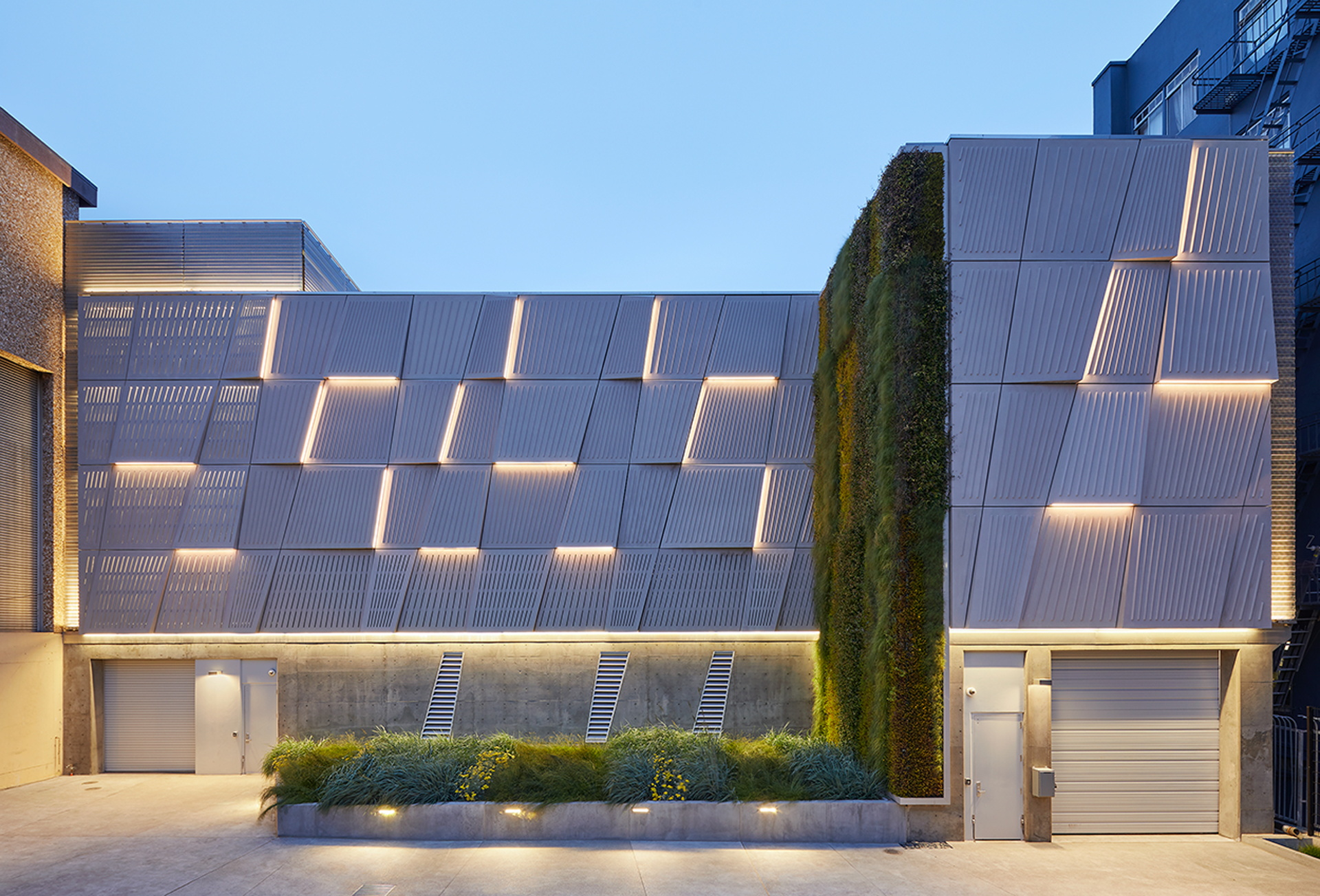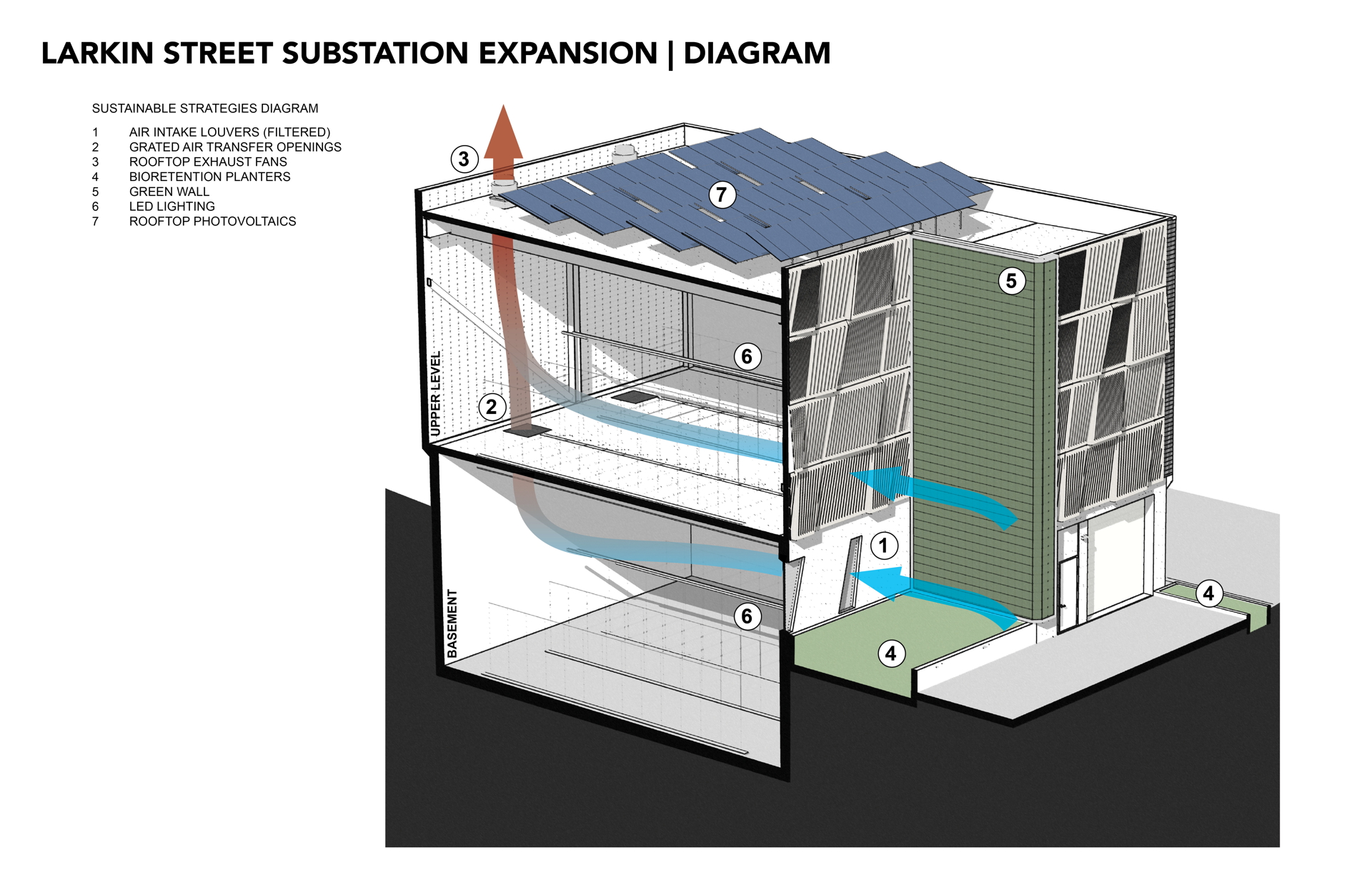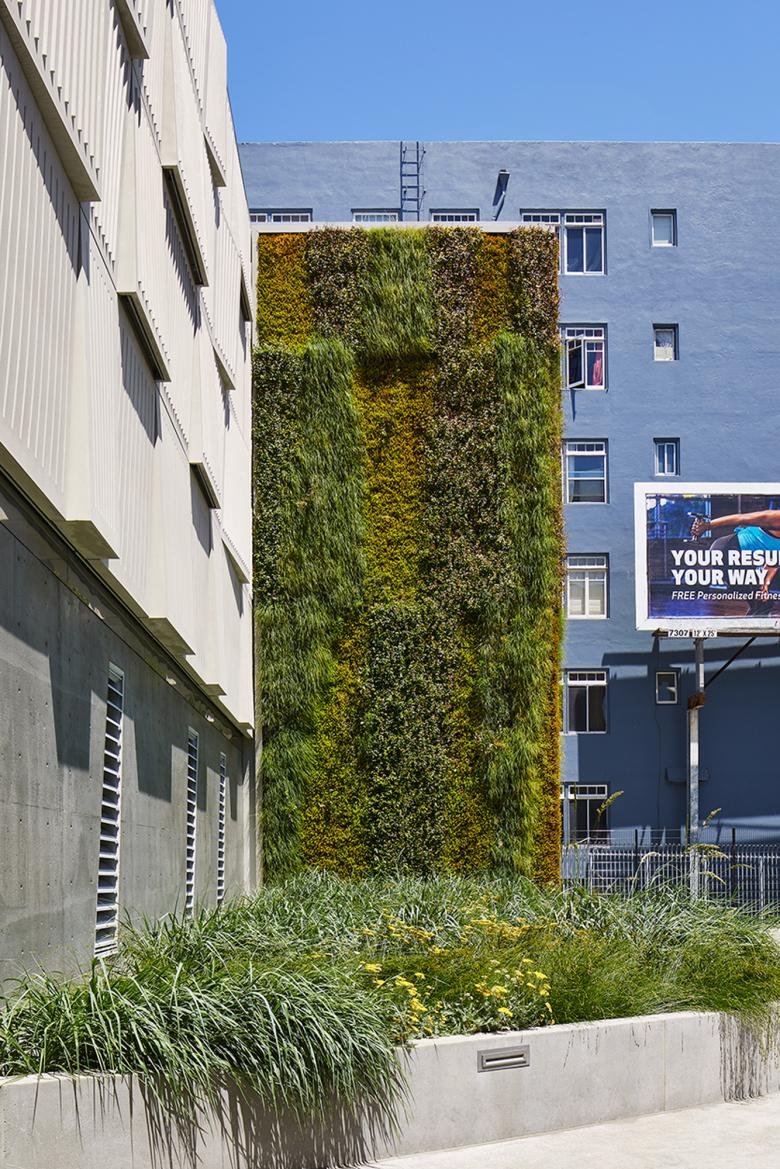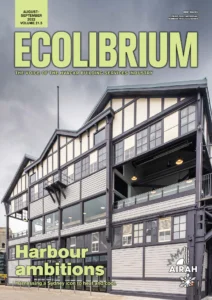Electric atmosphere

The PG&E Larkin Substation addition in San Francisco is the first building of its type to earn a rating from the Living Building Challenge.
A newly completed electrical switchgear building in downtown San Francisco is the first net zero energy (NZE) targeted electrical substation edifice in the country.
The building is a modern addition to an existing 1962 structure, which supplies power to the north-eastern part of the city. The one-story-plus-basement addition houses critical electrical infrastructure as well as storage and support space.
The design team collaborated with the International Living Futures Institute (ILFI) to establish a rating system for registering the unprecedented building type.






A primary goal for the project was to achieve zero net energy for the base building by limiting space conditioning and lighting energy use. A low-energy approach to space air conditioning was embraced.
“Large vents at the base of the building exploit the city’s cool temperatures through natural ventilation, which helps eliminate the need for artificial cooling and reduces the building’s energy load by nearly 40 per cent,” say the architects, TEF Design. “Inside, supplemental fans, triggered only at elevated temperatures, help to cool the building when needed. A deep dive to understand the electrical needs of each discreet piece of equipment – from mechanical systems to the hand dryer in the restrooms – led to an incremental load reduction.”
Ambient air temperature is maintained within optimal ranges for the equipment. High-efficiency LED lighting is used throughout, including the exterior.
The combined energy load is then offset by 60kW of onsite roof-mounted photovoltaics.
The building has been praised as an example of “infrastructure as great architecture”.

This article appears in Ecolibrium’s August-September 2022 edition
View the archive of previous editions
Latest edition
See everything from the latest edition of Ecolibrium, AIRAH’s official journal.




